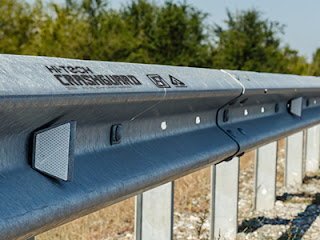An Introduction to GP Pipes: Versatility in Tubing
Galvanized Plain (GP) pipes are a popular choice in various industrial and residential projects due to their impressive durability and resistance to corrosion. These pipes, characterized by their plain surface and robust zinc coating, cater to a wide range of applications, from structural purposes to fluid transport.
Understanding GP Pipes
GP pipes, or Galvanized Plain pipes, are steel pipes that have undergone the process of galvanization, where a protective zinc coating is applied to prevent rust and corrosion. Unlike other galvanized pipes, GP pipes typically have a smooth and shiny finish which not only enhances their aesthetic appeal but also provides an additional layer of protection.
Manufacturing Process of GP Pipes
The manufacturing of GP pipes involves:
- Steel Making: High-quality steel is the starting point, shaped into tubes through high-precision methods.
- Galvanization: The formed steel pipes are dipped in a molten zinc bath, which coats them completely to guard against environmental elements.
- Finishing: Once galvanized, the pipes are finished to achieve a smooth plain surface that enhances their resistance and durability.
Common Applications of GP Pipes
GP pipes are widely used across several fields:
- Construction: Ideal for building frameworks, railings, gates, and roofing structures due to their strength and resistance to weather conditions.
- Plumbing and HVAC: Used in plumbing systems and for heating, ventilation, and air conditioning (HVAC) due to their ability to withstand moisture.
- Manufacturing: Employed in machinery and automotive industries where components require protection against rust and corrosion.
- Agriculture: Utilized in irrigation and greenhouse structures, providing long-term durability even under exposure to water and soil.
Advantages of GP Pipes
- Corrosion Resistance: Their zinc coating shields the steel from rust, making them suitable for outdoor and industrial environments.
- Durability: Strong and resilient, these pipes can support heavy loads and resist mechanical damage.
- Aesthetic Quality: The smooth finish of GP pipes makes them visually appealing, which is beneficial for visible installations.
- Easy to Paint: Unlike rough surfaces, the smooth surface of GP pipes is easier to paint, allowing for better adherence and finish of the paint.
Maintenance Tips
- Regular Inspections: Check for any signs of damage or corrosion, particularly in joints and connections.
- Proper Installation: Ensure that GP pipes are installed correctly to avoid damage and to maximize their lifespan.
- Cleaning: Keep the pipes clean from debris and dirt that might hold moisture and promote rust.
Future Trends in GP Pipe Technology
Advancements in manufacturing and material science are likely to enhance the qualities of GP pipes:
- Improved Galvanization Techniques: Innovations may allow for even stronger and more resilient coatings to extend the lifespan of GP pipes.
- Eco-friendly Solutions: With increasing environmental awareness, the production processes are expected to become more sustainable, reducing the impact on the environment.
Conclusion GP pipes are an essential component in numerous sectors, celebrated for their robustness, ease of maintenance, and corrosion resistance. They provide a reliable solution for many applications, ensuring safety and durability. As technology progresses, the capabilities and uses of GP pipes are expected to expand, marking a bright future for this versatile product in the construction and manufacturing industries.
More Read : Gp pipe | gp pipe manufacturers


Comments
Post a Comment